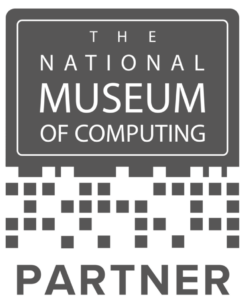Kanban is a highly visual, collaborative and increasingly popular service management and continuous improvement method. There are many confusing perspectives on what Kanban is and is not. Is it a software delivery practice? I’m using a task board to describe work, am I using Kanban? Is it a more advanced version of Scrum?
With this in mind, the focus of this article has really been on setting the right context for thinking about the topic. It is very much a brief introduction and aligns with the webinar I recently presented for itSMF UK members.
What is Kanban?
The meaning
The word Kanban has a number of different meanings all of which describe some aspect of the practices this guide will introduce you to.
In Japanese there are two meanings; both describing a different, but equally important, aspect of this simple management method. Kanban written in Kanji (Chinese characters) means “sign” or “large visual board”. Kanban written in, Hirigana (Japanese characters), means “signal card(s)” – the plural being written the same as the singular.
In Chinese, only the Kanji version exists and the meaning is literally “looking at the board”, but this was primarily influenced by the signal card system invented in Japan.
The origin
Kanban did not originate in the complex, high tech world of software development, oh no! In the late 1940’s Toyota, the Japanese car manufacturer, discovered a better engineering process from an improbable source, the American Supermarket. They observed market staff restocking grocery items based on their stores inventory, not their vendors supply. Only when an item was about to sell out did staff order more.
The grocer’s “just-in-time” process inspired Toyota engineers to match inventory with demand to achieve higher levels of quality and throughput by implementing a Kanban “pull” system of delivery.
Increasing popularity, adoption & adaptation
In 2006 a group of talented people including Kanban Thought Leaders David J Anderson, Dominica DeGrandis and Dan Vacanti formulated an approach drawing from Lean thinking which combined with Agile practices to help an IT operations team at Corbis, a Microsoft subsidiary, deal with an increasing list of production issues that had begun to cripple the organisation.
Kanban is a tool for managing flow in a process it can be used to control variability, in quality and delivery time, and can therefore reduce risk & effort and increase predictability & productivity. All projects and services can be viewed as a series of steps or tasks to achieve a desired outcome and can therefore benefit from Kanban.
The Agile software community has often used Toyota and its Toyota Production System (TPS) as a great analogy to encourage engineers, teams and organisations to transform how they work becoming more effective, productive and sustainable. As this movement has grown; Kanban and Lean Agile techniques are being adopted and adapted outside of software delivery and even outside of IT in other complex service industries such as HR, Finance, Legal, Health Care, Social Services, Voluntary and Charity sectors.
To these new Lean Agile practitioners, the analogy has shifted to describe how the Software & Digital Industry has employed Kanban in order to simplify and contend with the volatility, uncertainty, complexity and ambiguity (“VUCA”) of the post-internet world in which we are tasked to deliver increasingly specialised services at an ever accelerating pace.
Why Kanban?
The common questions
There are a lot of difficult questions in our “vuca” world, and often we struggle to put ourselves in a position to answer them with confidence. The easiest answered question, by any and every team I ask, is this:
Are you too busy?
Universally and resoundingly the response comes back:
Yes!
The following questions are always much harder to answer:
- What are you working on now?
- What stage is it at?
- Why is that your priority?
- Who is working on it?
- When will it be done?
- Why has it stopped?
- What next?
Kanban will help you understand and articulate answers to these questions which everyone will be confident in, because the practice of Kanban encourages staff, at all levels and across teams and departments, to collaborate transparently and frequently in order to agree what the best of those answers will be.
Out with the old and in with the new?
No, not at all. Kanban is not a project management or service management methodology, it is a tool that will overlay which ever methodology you currently employ so you can understand where impediments to delivery occur and where your opportunities for improvement lie. In fact, Kanban is an evolutionary process which insists you start with what you do right now, respecting all existing roles, responsibilities and through a number of core practices you will begin to provoke change within your existing processes to improve service delivery, and in turn customer & employee satisfaction.
How do I Kanban?

6 key concepts
1) Visualise, “Show your working out” with a Kanban board.
The most important thing about visualising is to build a board which describes your current delivery process as it is actually practiced. This can take a little while, and a few attempts or iterations, as we start to understand that our work often flows very differently to how the instructions or official process might be documented. It is important to evolve and modify the board as our understanding grows. Often the most profound impact of visualising is the realisation of just how much work an individual, team or department are being asked to do concurrently.
TIP: If something is stopping you progressing a piece of work (a blocker) visualise this with a small pink post-it and be sure to write on what the blockage is.
TIP: Now you have this visualisation bring stakeholders in front of it to have conversations about prioritisation, sequencing and what steps can be taken to clear blockers. You will find it will support their decision-making process and that will immediately improve team productivity and morale.
2) Limit work-in-progress (WIP), “Stop starting, start finishing”.
This will be done with the addition to the board of two types of signifier. (1) WIP limits, Kanban cards that depict a cross to describe the limit of the team’s capacity to take on more work and (2) Avatars, a representation of the team member if a single avatar is employed, or a representation of a specific amount of effort if multiple avatars are used to represent that single team member. These signifiers allow anyone and everyone to understand the capacity constraints a team has at any given moment, and the impact of forcing work to be done by breaking those limits. This then encourages a “pull” system of work similar to those supermarkets Toyota copied all those years ago.
TIP: The WIP limits need not be static but considered as “levers” to be moved up and down as necessary to allow work into the system as capacity allows.
TIP: If using multiple avatars agree a suitable number per person and do not deviate from this without agreement with the team or individual. Avatars should not be added just because more work has arrived.
TIP: If using multiple avatars wait until all of the individual’s/team’s work has been visualised. Now understand how many items of work each person has started. Take a rough average of that figure and halve it.
TIP: I would suggest no more than 5 avatars person in total. If a person is working across more than one board do not allow them to have 5 avatars per board, they must only ever have 5 avatars or fewer across all boards.
TIP: If someone has 5 avatars but is working flat out on 1 piece of work, put all avatars on that card to show where all of their effort is going.
3) Measure and Manage Flow. “When will it be done?”
The best measures to understand, manage and increase productivity and flow of work across the board are Lead Time, Cycle Time and Waiting Time. The most important metric for your Customer is Lead Time. This is the amount of time it takes between them asking you to do something and you delivering (Entering on the left-hand side of the board and exiting on the right). Cycle Time is most easily understood as Lead Time broken down into how long it takes each team or individual to deliver their part of the process from when they have accepted and committed to doing the work until it is complete and handed over, either back to the customer or the next individual or team that needs to contribute.
Waiting Time keeps track of where in the process the piece of work hangs around, either in a queue or inflight because it is blocked. Understanding and reducing waiting time can help to optimise you whole delivery system. It can be easy as introducing people, getting them talking to one another, maybe even organising certain activities to happen in the right sequence so that all the contributors can be ready to accept work at the most optimum time.
TIP: Display graphs and measurement information around the board to show evidence of your performance over time. These make for essential discussion points.
4) Display Policies, Procedures and Information around the Board. “If there is too much to remember people will forget”.
Kanban boards need to be as simple as possible to use, but because all teams work slightly differently, and the purpose of the board is to visualise how the team works we always need to include instructions. The board is there to clearly radiate information which may be complicated or complex e.g.
- Your work may be from different sources or of different types and therefore displayed on different coloured card, put a key up to explain what each colour means and stick to those colours;
- If any of your columns have agreed WIP limits, display the number of cards allowed in the column at the top of the column.
- You may have a specific card template to capture just enough relevant detail about the work you are doing, display the template with description of what goes in each field so that anyone wishing to add a card knows what to write and anyone reading a card knows what each field is telling them.
- You may want to display a timetable for the times the team(s) regularly meet around the board
- You may want to display the name of the team who works on the board and what they do or a “purpose” for them to come together.
This rich, additional information helps any new or infrequent visitor to the board understand quickly what is happening at any given time, this will help to make them confident asking question about how the work is progressing and make suggestions how they could help. The safer and more confident they feel, the better the contribution they can make, and that helps the work get done.
TIP: When first building a board frequently ask people, even passers-by, whether it makes sense and modify accordingly. Practice describing what the board depicts. This means when you need to put a senior stakeholder in front of it your “elevator pitch” will have much more impact.
5) Frequent Feedback Loops. “Things go better when people talk to one another”.
Every team should “Stand Up” in front of the board as frequently as possible to discuss how they are progressing the work displayed. They can discuss any progress made, but more importantly discuss problems they are having, improvements to flow, any help they need. The more frequent these stand ups are the less discussion is necessary and therefore the less disruptive and time consuming these discussions are.
Kanban encourages participation in a variety of other meetings or ceremonies, at different frequencies or cadences. It is not always necessary to create a new schedule of meetings, simply take these practices and the data to the meeting your organisation already has scheduled. You may even want to encourage the attendees of those meetings to go to where the work is being done, take them on a “tour of the boards” to see what opportunities for specific or broader improvement are observed.
TIP: Ideally this should be done every morning for no longer than 15 minutes.
TIP: If you meet less frequently the more time is taken up reminding people about the context of the work. 15 minutes everyday is 1 hour 15 per week, if you drop the frequency to 3 times per week you may see the stand up beginning to take 30 minutes which equates to 1 hour 30. Any less frequent and the discussion moves away from the specific work and into other politics, environmental and pastoral topics that would be better discussed elsewhere, a formal Team Meeting for example.
6) Improve Collaboratively, Evolve Experimentally. “gather around your data”
Now that you are employing the other 5 concepts, the last one will fall into place. Your board plays a number of roles; it radiates (almost) real-time information to anyone walking past or standing in front of it, it provides the illustrations to your story, it provokes conversation and encourages people to come forward and contribute if they see something they can influence, it is the ultimate in inclusivity – these are the cornerstones of collaboration.
Having current, readily available measurements, in plain sight, displayed graphically around the board will allow you to see how trying different types of teamwork, tech and tools change the effectiveness of your delivery. This means you are effectively running small experiments, scientifically, in order to steadily improve. Having this amount of awareness of your delivery “system” is very powerful and everyone at all levels will enjoy the benefits of having this much insight, control and agility.
TIP: It is not essential to employ all of these techniques immediately. Kanban is about evolution but sometimes real life and your current organisational and business constraints will make it difficult to go “full throttle” immediately. You will see immediate improvements if you try just a couple of the concepts, but kick off with visualisation and see what happens.

Matt Turner
Matt Turner began his career 25 years ago in IT Service Management for Barclays. Experiences in many levels of management from Team Lead to Director, across a varied spectrum of industries and sectors including government, higher education, cooperatives, e-commerce, national infrastructure and financial services has allowed him to amass a heaving catalogue of case studies, scar tissue and helpful perspectives on how people survive and thrive in organisations whilst meeting increasingly VUCA demands.
Matt has been a Kanban enthusiast and practitioner for over a decade, as a salaried employee and for the last 6 years as a freelance consultant. Coaching people in the best ways to manage work, training them as a Kanban University Accredited Kanban Trainer (AKT) and co-organising the Lean Agile UK meetup groups online and throughout the North of England he continues to grow and share his knowledge of Lean Agile and Service Management practices on behalf of his own consultancy Hapus.net, Solutioneers and Deloitte.


